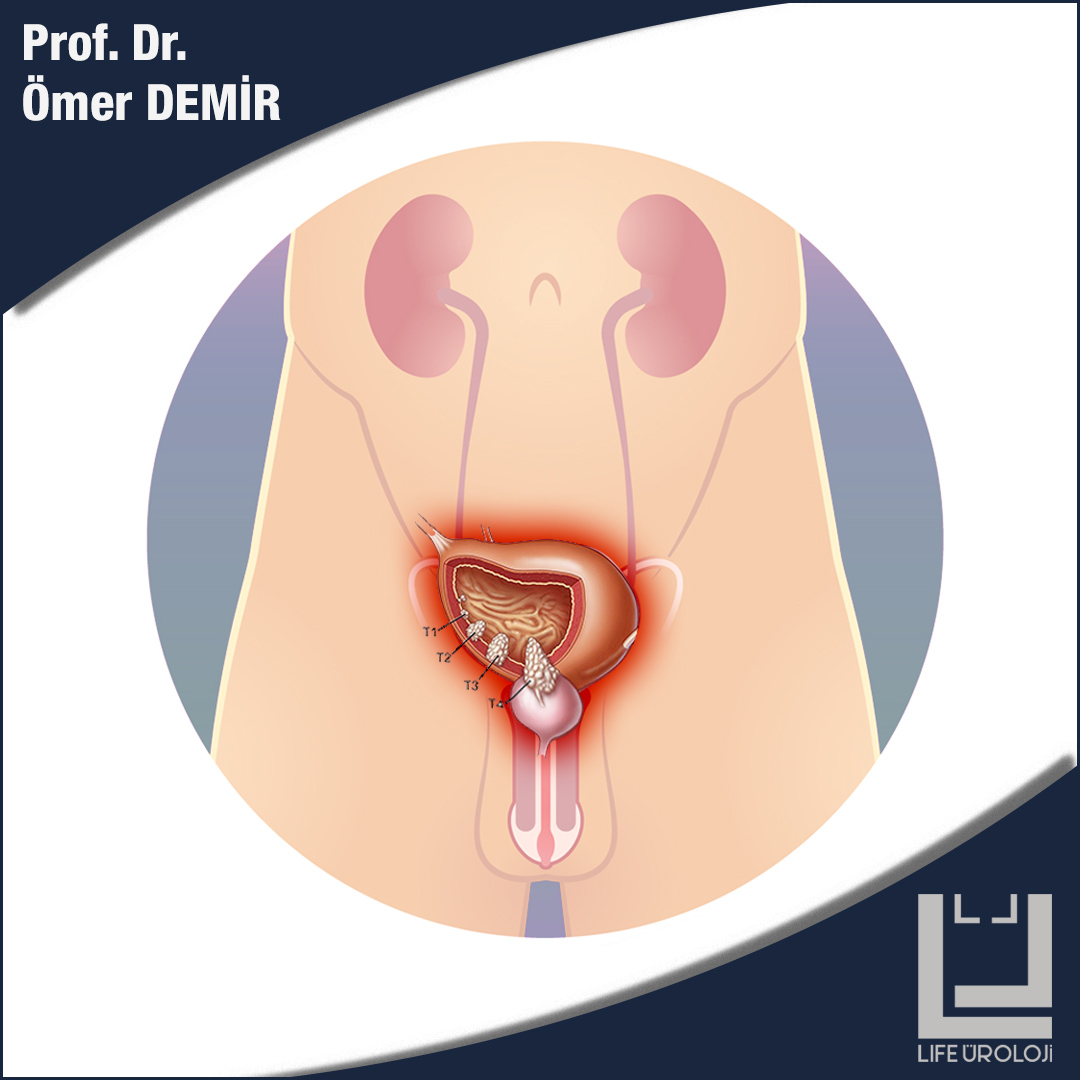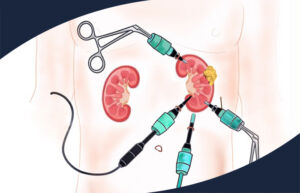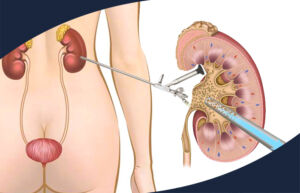BLADDER TUMOR
75-80% of bladder tumors occur in the early stage at the first admission. The main presenting symptom of bladder tumor patients is bloody urination. Bloody urine is usually painless and is seen intermittently. Some of the patients state that they have occasional blood clots.
Diagnosis in bladder tumors
In cases presenting with bloody urine and suspected bladder tumor, abdominal ultrasonography is performed first. The majority of bladder tumors can be detected by ultrasound examination. Computed tomography or further imaging tests are performed according to the ultrasound findings. Even if no findings are found in imaging tests, bladder endoscopy called cystoscopy should be performed in every patient presenting with bloody urine and suspected of bladder tumor. The most effective and reliable method in the diagnosis of bladder tumors is cystoscopy. The cystoscopy procedure is a simple procedure performed under local anaesthesia in the office environment or under general anaesthesia if preferred, thanks to the newly developed flexible, ie flexible soft devices. During cystoscopy, the inside of the bladder is visualised and the location, size and type of tumors are noted, if any.

Treatment of bladder tumors
In every patient diagnosed with bladder tumor, it is necessary to enter the bladder with cystoscopy as the first step of the diagnostic approach and treatment, and the tumors should be scraped and burned with various methods.
Tumors scraped by the transurethral resection (TUR) method are subjected to examination in the pathology laboratory and the type of tumor, the degree of progression in the urinary bladder wall and other accompanying findings are reported.
In early stage or superficial bladder tumors (not advanced into the muscle layer), various drug applications are made into the bladder after TUR procedure and the patient is followed up. The most important procedure in follow-up is the periodic cystoscopy procedure.
The standard treatment for invasive bladder tumors (advanced into the muscle layer) is Urinary Diversion surgery together with Radical Cystectomy. It is the best treatment option that can be recommended to patients if no spreading (metastasis) to an organ or tissue is detected in the body scan. In radical cystectomy surgery;
In the first stage, the lymph nodes below the umbilical level are surgically cleaned.
In stage 2, the bladder and prostate are taken together in men; In women, the uterus and ovaries are removed along with the bladder.
In the third stage, urinary diversion is performed. For urinary diversion, a segment from the small intestine is turned into an artificial bladder, then the ureters carrying urine from the kidney are welded to the part of this artificial bladder remaining in the body, the other end of the artificial bladder is removed to the patient’s abdomen and the patient’s urine is discharged from here through special collecting systems. There are various forms of artificial bladder and are available in methods that are completely in the abdomen. The type of artificial bladder to be made is decided according to the characteristics of the patient and the tumor.
In metastatic bladder tumors (which have spread to other tissues and organs in the body), chemotherapy applications and smart drug applications can be performed in suitable patients.




